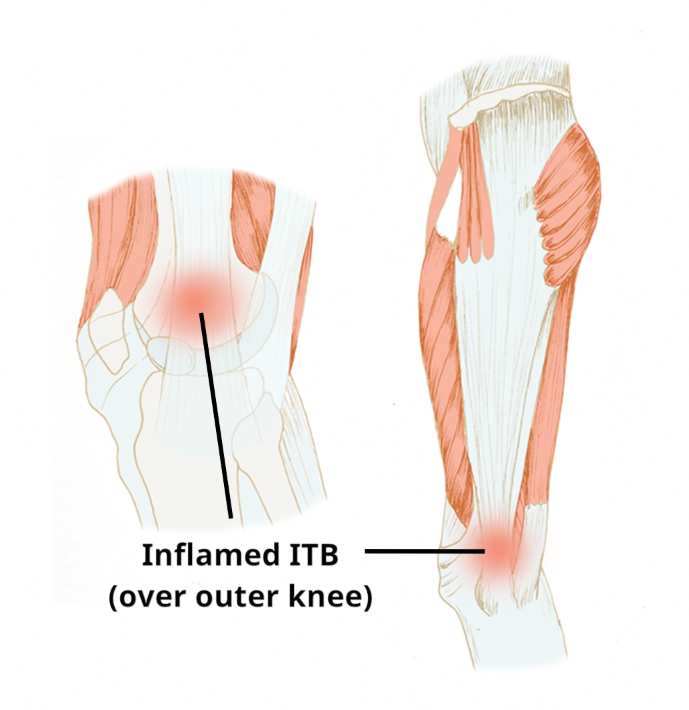
Iliotibial band (ITB) syndrome is a condition where pain is felt in the outer aspect of the lower thigh, just above the knee, on physical activities.
The ITB is a strong band of connective tissue which runs from the outer aspect of the pelvis to the outer aspect of the tibia bone just below the knee joint.
Through its attachment to many of the gluteal muscles and the tensor fascia lata (TFL) muscle at the pelvis, the ITB generates significant tension during sporting activities involving repeated flexion and extension of the hip and knee such as running and cycling.
ITB syndrome arises if there is weakness and lack of flexibility in the muscles of the hip and knee. Excessive tension through the ITB causes friction in the outer lower thigh with associated pain.
Normally ITB syndrome is the result of sharp increases in training intensity without adequate rest between training sessions.
How is ITB syndrome treated?
ITB syndrome can be managed very effectively by adhering to the following advice and exercise routine.
Ceasing aggravating activities
The ITB may need 4-6 weeks of relative rest initially to settle symptoms while you work on specific strengthening and flexibility exercises for the hip and thigh muscles (see below). You may continue with activities which do not aggravate symptoms.
Exercises
Regular exercises to strengthen and stretch the hip and thigh muscles.
Physiotherapy
If symptoms fail to resolve with a reduction in aggravating activities and home exercises, a referral to physiotherapy may be appropriate.